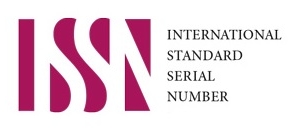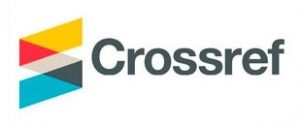Keywords cloud
15. Enhancing operability of the fuel system units in the hot climate conditions
DINTEM Ukrainian Research Design-Technological Institute of Elastomer Materials and Products LLC1; FED Joint Stock Company2
Page: Kosm. teh. Raket. vooruž. 2024, (1); 129-135
DOI: https://doi.org/10.33136/stma2024.01.129
Language: Ukrainian
Key words: leaktightness of articles, fluorosiloxane rubber, rubber, temperature of the hot climate, physical-mechanical properties of the rubber, climatic endurance tests, elastic properties, warranty life
- Lepetov V. A., Yurtsev L. N. Raschet i konstruirovanie rezinovykh izdeliy. Moskva.
Khimia. 1971. 417 s.
Full text (PDF) || Content 2024 (1)
| Country | City | Downloads |
|---|---|---|
| USA | Mountain View; San Jose; Saint Louis; Los Angeles; Los Angeles; Phoenix; Phoenix; Phoenix; Phoenix; Phoenix; Phoenix; Phoenix; Phoenix; Phoenix; Phoenix; Phoenix; Phoenix; Los Angeles; Chicago; El Monte; Seattle; Columbus; Ashburn;; Mountain View; Portland; Portland; San Mateo; San Mateo; Ashburn; Ashburn; Ashburn; Ashburn; Pompano Beach; Seattle; Seattle | 36 |
| Canada | Toronto; Toronto; Toronto; Toronto; Toronto; Toronto | 6 |
| China | Pekin; Yaocheng; Pekin; Shenzhen; Pekin | 5 |
| Germany | Falkenstein; Düsseldorf; Falkenstein; Leipzig; Leipzig | 5 |
| Singapore | Singapore; Singapore | 2 |
| France | ; Paris | 2 |
| India | Mumbai | 1 |
| Thailand | Songkhla | 1 |
| The Republic of Korea | Seoul | 1 |
| Netherlands | Amsterdam | 1 |
| Ukraine | Kremenchuk | 1 |
5. Assessment of risk of toxic damage to people in case of a launch vehicle accident at flight
Page: Kosm. teh. Raket. vooruž. 2024, (1); 40-50
DOI: https://doi.org/10.33136/stma2024.01.040
Language: English
Key words: launch vehicle, critical failure, flight accident, zone of toxic damage to people, zone of dangerous impact of the failed launch vehicle, risk of toxic damage to people.
- Hladkiy E. H. Protsedura otsenky poletnoy bezopasnosti raket-nositeley, ispolzuyuschaya geometricheskoe predstavlenie zony porazheniya obiekta v vide mnogougolnika. Kosmicheskaya technika. Raketnoe vooruzhenie: sb. nauch.-techn. st. Dnepropetrovsk: GP «KB «Yuzhnoye», 2015. Vyp. 3. S. 50 – 56. [Hladkyi E. Procedure for evaluation of flight safety of launch vehicles, which uses geometric representation of object lesion zone in the form of a polygon. Space Technology. Missile Weapons: Digest of Scientific Technical Papers. Dnipro: Yuzhnoye SDO, 2015. Issue 3. Р. 50 – 56. (in Russian)].
- Hladkiy E. H., Perlik V. I. Vybor interval vremeni blokirovki avariynogo vyklucheniya dvigatelya na nachalnom uchastke poleta pervoy stupeni. Kosmicheskaya technika. Raketnoe vooruzhenie: sb. nauch.-tech. st. Dnepropetrovsk: GP «KB «Yuzhnoye», 2011. Vyp. 2. s. 266 – 280. [Hladkyi E., Perlik V. Selection of time interval for blocking of emergency engine cut off in the initial flight leg of first stage. Space Technology. Missile Weapons: Digest of Scientific Technical Papers. Dnipro: Yuzhnoye SDO, 2011. Issue 2. Р. 266 – 280. (in Russian)].
- Hladkiy E. H., Perlik V. I. Matematicheskie modeli otsenki riska dlya nazemnykh obiektov pri puskakh raket-nositeley. Kosmicheskaya technika. Raketnoe vooruzhenie: sb. nauch.-techn. st. Dnepropetrovsk: GP «KB «Yuzhnoye», 2010. Vyp. 2. S. 3 – 19. [Hladkyi E., Perlik V. Mathematic models for evaluation of risk for ground objects during launches of launch-vehicles. Space Technology. Missile Weapons: Digest of Scientific Technical Papers. Dnipro: Yuzhnoye SDO, 2010. Issue 2. P. 3 – 19. (in Russian)].
- NPAOP 0.00-1.66-13. Pravila bezpeki pid chas povodzhennya z vybukhovymy materialamy promyslovogo pryznachennya. Nabrav chynnosti 13.08.2013. 184 s [Safety rules for handling explosive substances for industrial purposes. Consummated 13.08.2013. 184 p.
(in Ukranian)]. - AFSCPMAN 91-710 RangeSafetyUserRequirements. Vol. 1. 2016 [Internet resource]. Link : http://static.e-publishing.af.mil/production/1/afspc/publicating/
afspcman91-710v1/afspcman91-710. V. 1. pdf. - 14 CFR. Chapter III. Commercial space transportation, Federal aviation administration, Department of transportation, Subchapter C – Licensing, part 417 – Launch Safety, 2023 [Internet resource]. Link: http://law.cornell.edu/cfr/text/14/part-417.
- 14 CFR. Chapter III. Commercial space transportation, Federal aviation administration, Department of transportation, Subchapter C – Licensing, part 420 License to Operate a Launch Site. 2022 [Internet resource]. Link: http://law.cornell.edu/cfr/text/14/part-420.
- ISO 14620-1:2018 Space systems – Safety requirements. Part 1: System safety.
- 9 GOST 12.1.005-88. Systema standartov bezopasnosti truda. Obschie sanitarno-gigienicheskie trebovaniya k vozdukhu rabochei zony. [GOST 12.1.005-88. Labor safety standards system. General sanitary and hygienic requirements to air of working zone].
- 10 Rukovodyaschiy material po likvidatsii avarijnykh bolshykh prolivov okislitelya АТ (АК) i goruchego NDMG. L.:GIPKh, 1981, 172 s. [Guidelines on elimination of large spillages of oxidizer NTO and fuel UDMH. L.:GIPH, 1981, 172 p. (in Russian)].
- 11 Kolichestvennaya otsenka riska chimicheskykh avariy. Kolodkin V. M., Murin A. V., Petrov A. K., Gorskiy V. G. Pod red. Kolodkina V. M. Izhevsk: Izdatelskiy dom «Udmurtskiy universitet», 2001. 228 s. [Quantitative risk assessment of accident at chemical plant. Kolodkin V., Murin A., Petrov A., Gorskiy V. Edited by Kolodkin V. Izhevsk: Udmurtsk’s University. Publish house, 2001. 228 p. (in Russian)].
Full text (PDF) || Content 2024 (1)
| Country | City | Downloads |
|---|---|---|
| USA | Ashburn; Mountain View; Buffalo; Buffalo; Las Vegas; San Jose; Chicago; Chicago; Saint Louis; Saint Louis;; New York City; Buffalo; Buffalo; Buffalo; Buffalo; Los Angeles; Chicago; Columbus; Ashburn; Ashburn; Dallas; New Haven; New Haven; Buffalo; Phoenix; Phoenix; Phoenix; Phoenix; Phoenix; Phoenix; Phoenix; Phoenix; Phoenix; Phoenix; Phoenix; Phoenix; Phoenix; Phoenix; Chicago; San Francisco; Los Angeles; San Francisco; El Monte; Seattle; Ashburn; North Charleston; Mountain View; Mountain View; Portland; Portland; Portland; San Mateo; Ashburn; Ashburn; Pompano Beach | 56 |
| China | Pekin; Fuzhou;; Shenzhen; Pekin; Hangzhou | 6 |
| Germany | Falkenstein; Düsseldorf; Falkenstein; Leipzig; Leipzig | 5 |
| Canada | Toronto; Toronto; Toronto; Toronto; Toronto | 5 |
| Singapore | Singapore; Singapore; Singapore; Singapore | 4 |
| The Republic of Korea | Seoul;; Seoul | 3 |
| France | ; Paris | 2 |
| Unknown | ; | 2 |
| Romania | 1 | |
| India | 1 | |
| Netherlands | Amsterdam | 1 |
| Ukraine | Kremenchuk | 1 |
20. Studying the possibility of alternating delivery of rocket propellant wastes to a common thermal neutralization facility
Yangel Yuzhnoye State Design Office, Dnipro, Ukraine
Page: Kosm. teh. Raket. vooruž. 2020, (1); 177-183
DOI: https://doi.org/10.33136/stma2020.01.177
Language: Russian
Key words: neutralization unit, supply assemblies, alternate supply, rocket propellants interaction, universal thermal neutralization unit
Full text (PDF) || Content 2020 (1)
| Country | City | Downloads |
|---|---|---|
| USA | Boardman; Springfield; Matawan; Baltimore; Plano; Miami; Columbus; Detroit; Phoenix; Phoenix; Phoenix; Phoenix; Phoenix; Phoenix; Phoenix; Phoenix; Phoenix; Phoenix; Phoenix; Phoenix; Phoenix; Monroe; El Monte; El Monte; Ashburn; Seattle; Seattle; Seattle; Ashburn; Ashburn; Ashburn; Ashburn; Ashburn; Ashburn; Ashburn; Boardman; Mountain View; Mountain View; Mountain View; Seattle; Tappahannock; Portland; San Mateo; San Mateo; San Mateo; San Mateo; San Mateo; Ashburn; Des Moines; Boardman; Boardman; Ashburn; Ashburn; Pompano Beach; Seattle | 55 |
| Singapore | Singapore; Singapore; Singapore; Singapore; Singapore; Singapore; Singapore; Singapore; Singapore; Singapore | 10 |
| Canada | Toronto; Toronto; Monreale | 3 |
| Germany | Essen; Falkenstein | 2 |
| Netherlands | Amsterdam; Amsterdam | 2 |
| Finland | Helsinki | 1 |
| Unknown | 1 | |
| Indonesia | Bekasi | 1 |
| Great Britain | London | 1 |
| France | Paris | 1 |
| Romania | Voluntari | 1 |
| Ukraine | Dnipro | 1 |
18. Development of autonomous power engineering systems with hydrogen energy storage
Pidgorny A. Intsitute of Mechanical Engineering Problems, Kharkiv, Ukraine1; Yangel Yuzhnoye State Design Office, Dnipro, Ukraine2
Page: Kosm. teh. Raket. vooruž. 2020, (1); 160-169
DOI: https://doi.org/10.33136/stma2020.01.160
Language: Russian
Key words: alternative energy sources, hydrogen, solar energy, hydrogen generator
Full text (PDF) || Content 2020 (1)
| Country | City | Downloads |
|---|---|---|
| USA | Ashburn; Matawan; Baltimore; North Bergen; Plano; Ashburn; Phoenix; Phoenix; Phoenix; Phoenix; Phoenix; Phoenix; Phoenix; Phoenix; Phoenix; Phoenix; Phoenix; Phoenix; Phoenix; Phoenix; Phoenix; Phoenix; Monroe; El Monte; El Monte; Ashburn; Seattle; Seattle; Seattle; Ashburn; Ashburn; Mountain View; Quinton; Houston; Boardman; Ashburn; Ashburn; Seattle; Tappahannock; Portland; San Mateo; San Mateo; San Mateo; San Mateo; Columbus; Des Moines; Boardman; Boardman; Ashburn; Ashburn; Ashburn; Pompano Beach | 52 |
| Singapore | Singapore; Singapore; Singapore; Singapore; Singapore; Singapore; Singapore; Singapore; Singapore; Singapore | 10 |
| Canada | Toronto; Toronto; Toronto; Monreale | 4 |
| Germany | Karlsruhe; Falkenstein | 2 |
| Netherlands | Amsterdam; Amsterdam | 2 |
| Vietnam | 1 | |
| Finland | Helsinki | 1 |
| Unknown | 1 | |
| France | Paris | 1 |
| Mongolia | 1 | |
| Latvia | Riga | 1 |
| Romania | Voluntari | 1 |
| Ukraine | Dnipro | 1 |
12. Modification of technology as the main course in the military transport aircraft development
Antоnov Company, Kyiv, Ukraine
Page: Kosm. teh. Raket. vooruž. 2020, (1); 114-120
DOI: https://doi.org/10.33136/stma2020.01.114
Language: Russian
Key words: military transport aircraft, hallmarks of military transport aircraft modifications, principles of designing military transport aircraft modifications
Full text (PDF) || Content 2020 (1)
| Country | City | Downloads |
|---|---|---|
| USA | Boardman; Ashburn; Mountain View; Columbus; Matawan;;; North Bergen; Boydton; Plano; Dublin; Ashburn; Phoenix; Phoenix; Phoenix; Phoenix; Phoenix; Phoenix; Phoenix; Phoenix; Phoenix; Phoenix; Phoenix; Phoenix; Phoenix; Phoenix; Phoenix; Phoenix; Phoenix; Monroe; El Monte; El Monte; Ashburn; Seattle; Seattle; Ashburn; Ashburn; Ashburn; North Charleston; Mountain View; Mountain View; Mountain View; Seattle; Portland; San Mateo; San Mateo; San Mateo; San Mateo; San Mateo; San Mateo; Ashburn; Ashburn; Des Moines; Boardman; Ashburn; Boardman; Ashburn; Ashburn; Ashburn; Pompano Beach | 60 |
| Singapore | Singapore; Singapore; Singapore; Singapore; Singapore; Singapore; Singapore; Singapore; Singapore; Singapore; Singapore | 11 |
| Canada | Toronto; Toronto; Toronto; Toronto; Monreale | 5 |
| Germany | Suderburg; Falkenstein | 2 |
| Netherlands | Amsterdam; Amsterdam | 2 |
| Pakistan | Rawalpindi | 1 |
| Cambodia | Phnom Penh | 1 |
| Finland | Helsinki | 1 |
| Unknown | 1 | |
| France | Paris | 1 |
| Romania | Voluntari | 1 |
| Ukraine | Dnipro | 1 |
9. Experimental investigation of a liner-free propellant tank made from polymer composite materials
Yangel Yuzhnoye State Design Office, Dnipro, Ukraine
Page: Kosm. teh. Raket. vooruž. 2020, (1); 90-98
DOI: https://doi.org/10.33136/stma2020.01.090
Language: Russian
Key words: load-bearing shell, permeability, cryogenic propellant, relative deformations, linear thermal expansion coefficient
Full text (PDF) || Content 2020 (1)
| Country | City | Downloads |
|---|---|---|
| USA | Boardman; Ashburn; Columbus; Matawan; Baltimore; Los Angeles; Springfield; North Bergen; Dublin; Ashburn; Ashburn; Phoenix; Phoenix; Phoenix; Phoenix; Phoenix; Phoenix; Phoenix; Phoenix; Phoenix; Phoenix; Phoenix; Phoenix; Phoenix; Phoenix; Phoenix; Monroe; El Monte; Ashburn; Ashburn; Seattle; Seattle; Ashburn; Ashburn; Mountain View; Ashburn; Ashburn; Mountain View; Mountain View; Seattle; Seattle; Tappahannock; Portland; San Mateo; San Mateo; San Mateo; San Mateo; Des Moines; Boardman; Ashburn; Ashburn; Pompano Beach; | 53 |
| Singapore | Singapore; Singapore; Singapore; Singapore; Singapore; Singapore; Singapore; Singapore; Singapore; Singapore; Singapore; Singapore; Singapore | 13 |
| Canada | Toronto; Toronto; Toronto; Toronto; Monreale | 5 |
| Unknown | ;;; | 4 |
| Germany | ; Falkenstein | 2 |
| Netherlands | Amsterdam; Amsterdam | 2 |
| Ukraine | Dnipro; Odessa | 2 |
| Malaysia | Kuala Lumpur | 1 |
| Finland | Helsinki | 1 |
| France | Paris | 1 |
| Ireland | Dublin | 1 |
| Romania | Voluntari | 1 |
8. Determining the main parameters of transport aircraft modifications considering the fuel efficiency
Antоnov Company, Kyiv, Ukraine
Page: Kosm. teh. Raket. vooruž. 2020, (1); 85-89
DOI: https://doi.org/10.33136/stma2020.01.085
Language: Russian
Key words: productivity, carrying capacity, fuel efficiency, parameter formation
Full text (PDF) || Content 2020 (1)
| Country | City | Downloads |
|---|---|---|
| USA | Boardman; Matawan; Baltimore;; Plano; Columbus; Columbus; Phoenix; Phoenix; Phoenix; Phoenix; Phoenix; Phoenix; Phoenix; Phoenix; Phoenix; Phoenix; Phoenix; Phoenix; Phoenix; Phoenix; Phoenix; Phoenix; Monroe; El Monte; El Monte; Ashburn; Seattle; Seattle; Seattle; Ashburn; Ashburn; Ashburn; Ashburn; Ashburn; Mountain View; Ashburn; Mountain View; Mountain View; Seattle; Tappahannock; Portland; Portland; San Mateo; San Mateo; San Mateo; San Mateo; Des Moines; Boardman; Ashburn; Boardman; Ashburn; Ashburn; Pompano Beach | 54 |
| Singapore | Singapore; Singapore; Singapore; Singapore; Singapore; Singapore; Singapore; Singapore; Singapore; Singapore; Singapore | 11 |
| Canada | Toronto; Toronto; Toronto; Toronto; Toronto; Monreale | 6 |
| Netherlands | Amsterdam; Amsterdam | 2 |
| Vietnam | Ho Chi Minh City | 1 |
| Unknown | Brisbane | 1 |
| Finland | Helsinki | 1 |
| France | Paris | 1 |
| Germany | Falkenstein | 1 |
| Romania | Voluntari | 1 |
| Ukraine | Dnipro | 1 |
17. Peculiarities of Dynamics of Recoverable Part of Stage of Aircraft-Type Configuration with Turbojet Engine
Yangel Yuzhnoye State Design Office, Dnipro, Ukraine
Page: Kosm. teh. Raket. vooruž. 2018 (2); 143-150
DOI: https://doi.org/10.33136/stma2018.02.143
Language: Russian
Key words: guided descent, turbojet, kinematic characteristics, tangency point, civil aviation
Full text (PDF) || Content 2018 (2)
| Country | City | Downloads |
|---|---|---|
| USA | Ashburn; Ashburn; Ashburn; Matawan; Baltimore; Cheyenne; Plano; Dublin; Ashburn; Phoenix; Phoenix; Phoenix; Phoenix; Phoenix; Phoenix; Phoenix; Phoenix; Phoenix; Phoenix; Phoenix; Phoenix; Phoenix; Phoenix; Phoenix; Phoenix; Monroe; El Monte; El Monte; Ashburn; Seattle; Seattle; Ashburn; Ashburn; Ashburn; Ashburn; Mountain View; Mountain View; Seattle; Antioch; Tappahannock; Portland; San Mateo; San Mateo; San Mateo; Ashburn; Columbus; Ashburn; Des Moines; Boardman; Ashburn; Ashburn; Pompano Beach | 52 |
| Singapore | Singapore; Singapore; Singapore; Singapore; Singapore; Singapore; Singapore; Singapore; Singapore; Singapore; Singapore | 11 |
| Canada | Toronto; Toronto; Toronto; Toronto; Monreale | 5 |
| Unknown | Brisbane; | 2 |
| Great Britain | London; | 2 |
| Germany | Frankfurt am Main; Falkenstein | 2 |
| Netherlands | Amsterdam; Amsterdam | 2 |
| India | Kolkata | 1 |
| Belgium | Brussels | 1 |
| Finland | Helsinki | 1 |
| Romania | Voluntari | 1 |
| Ukraine | Dnipro | 1 |
16. Design Solutions to Prevent Propellant Ingress into SRM Case Space behind Sealing Ring
Yangel Yuzhnoye State Design Office, Dnipro, Ukraine
Page: Kosm. teh. Raket. vooruž. 2018 (2); 139-142
DOI: https://doi.org/10.33136/stma2018.02.139
Language: Russian
Key words: insert, charge, ring, cuff
Full text (PDF) || Content 2018 (2)
| Country | City | Downloads |
|---|---|---|
| USA | Boardman; Matawan; Los Angeles;; Plano; Columbus; Columbus; Phoenix; Phoenix; Phoenix; Phoenix; Phoenix; Phoenix; Phoenix; Phoenix; Phoenix; Phoenix; Phoenix; Phoenix; Phoenix; Phoenix; Phoenix; Monroe; El Monte; Ashburn; Seattle; Seattle; Ashburn; Ashburn; Houston; Ashburn; Ashburn; Boardman; Ashburn; Mountain View; Mountain View; Mountain View; Seattle; Tappahannock; Ashburn; Ashburn; Portland; San Mateo; San Mateo; San Mateo; Des Moines; Ashburn; Boardman; Ashburn; Ashburn; Pompano Beach | 51 |
| Singapore | Singapore; Singapore; Singapore; Singapore; Singapore; Singapore; Singapore | 7 |
| Ukraine | Dnipro; Kharkiv; Dnipro | 3 |
| Canada | Toronto; Toronto; Monreale | 3 |
| Germany | Frankfurt am Main; Falkenstein | 2 |
| Netherlands | Amsterdam; Amsterdam | 2 |
| Belgium | Brussels | 1 |
| Philippines | 1 | |
| Finland | Helsinki | 1 |
| Romania | Voluntari | 1 |
9. The Impact of Worm Design on Power and Anti-Cavitation Properties of Worm-Centrifugal Pumps
Yangel Yuzhnoye State Design Office, Dnipro, Ukraine
Page: Kosm. teh. Raket. vooruž. 2018 (2); 76-82
DOI: https://doi.org/10.33136/stma2018.02.076
Language: Russian
Key words: pressure characteristic, cavitation characteristic, inducers of the variable-pitch, continuous-pitch inducers, pump efficiency
Full text (PDF) || Content 2018 (2)
| Country | City | Downloads |
|---|---|---|
| USA | Boardman; Ashburn; Ashburn; Matawan; Los Angeles; Baltimore; North Bergen; Plano; Dublin; Columbus; Columbus; Phoenix; Phoenix; Phoenix; Phoenix; Phoenix; Phoenix; Phoenix; Phoenix; Phoenix; Phoenix; Phoenix; Phoenix; Phoenix; Phoenix; Phoenix; Monroe; El Monte; Ashburn; Ashburn; Ashburn; Ashburn; Ashburn; Boardman; Ashburn; Mountain View; Seattle; Tappahannock; Portland; Portland; San Mateo; San Mateo; San Mateo; San Mateo; San Mateo; San Mateo; Columbus; Des Moines; Boardman; Ashburn; Ashburn; Ashburn; Pompano Beach | 53 |
| Singapore | Singapore; Singapore; Singapore; Singapore; Singapore; Singapore | 6 |
| Canada | Toronto; Toronto; Toronto; Toronto; Toronto; Monreale | 6 |
| Germany | ; Falkenstein | 2 |
| Netherlands | Amsterdam; Amsterdam | 2 |
| Ukraine | Kryvyi Rih; Dnipro | 2 |
| Cambodia | Phnom Penh | 1 |
| Finland | Helsinki | 1 |
| Unknown | 1 | |
| Indonesia | 1 | |
| France | Paris | 1 |
| Romania | Voluntari | 1 |


